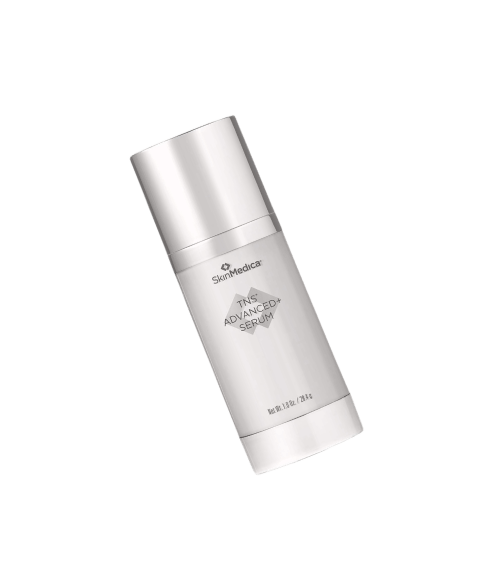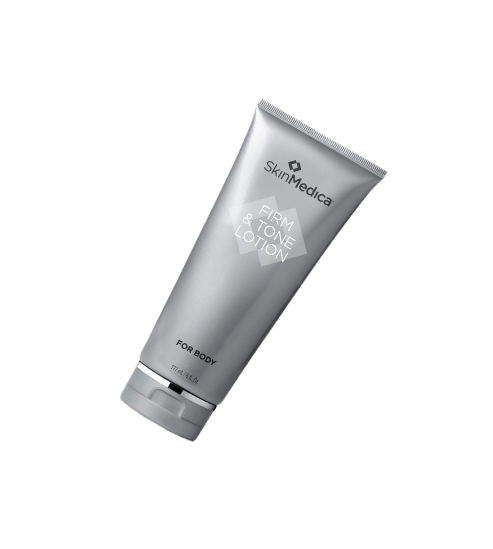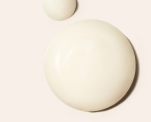Table of Contents
-
- What Is Skin Exfoliation?
- Benefits of Exfoliating the Skin
- What Type of Exfoliant Should You Use?
- How to Exfoliate Your Face
- Considering Your Skin Type Before Exfoliating
- Tips for Exfoliating the Face
- How to Exfoliate Your Body
- How Often Should You Exfoliate Your Skin?
- Precautions to Take When Exfoliating Skin
There are many ways to achieve glowing, healthy skin. Whether you want to load up on antioxidants or invest in laser surfacing, there are different avenues that you can take to improve the tone and texture of your skin. If you’re looking for another alternative, how to exfoliate your skin is simple and it is an effective way to take care of your skin. Here is how to exfoliate your face to avoid dull skin.
What Is Skin Exfoliation?
If you’re wondering what is exfoliating skin, you’ve come to the right place. When you exfoliate your skin, you are removing dead skin cells that are sitting on the top layer of the skin to improve your skin’s appearance. There are two ways to exfoliate. You can either opt for chemical exfoliation that uses AHAs or BHAs to loosen any dead cells. On the other hand, you can also opt for a physical exfoliant that uses a scrub, gel, or liquid to remove dead skin cells.
Benefits of Exfoliating the Skin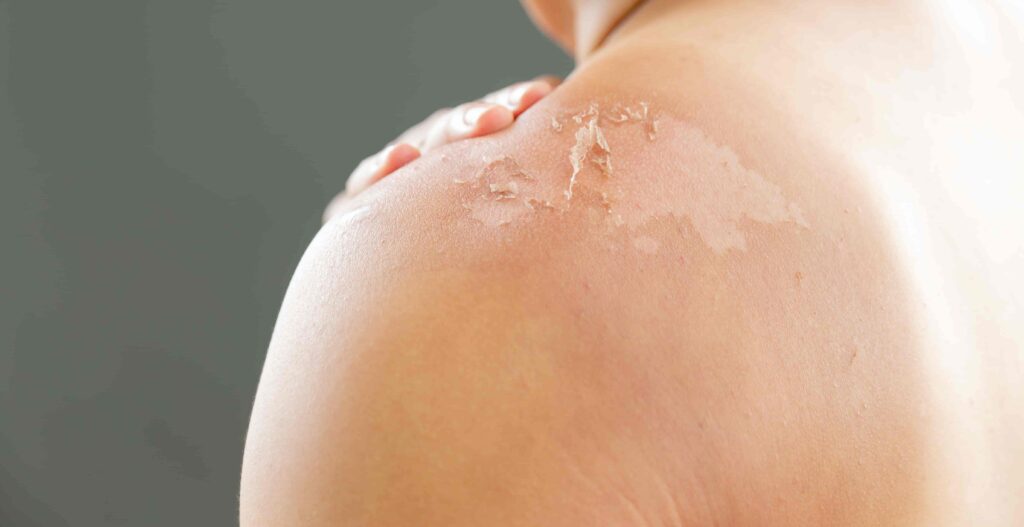
Your skin is always working to repair and replace itself. This often results in built-up layers of dead skin cells all over your body. So what does exfoliating do for the skin? There are many major benefits of exfoliation:
- It fades the appearance of age spots;
- It reduces the appearance of fine lines and wrinkles;
- It allows your skin to better soak in collagen-boosting serums, antioxidants, and moisturizers;
- It keeps pores unclogged;
- It helps minimize pore size and reduces superficial scars.
It’s undoubtedly a positive to have brighter and more glowing skin. But incorporating exfoliation into your skincare routine can also improve the overall health of your skin as well. The more dead skin cells that are on the top layer of your skin, the less your products can penetrate the skin’s surface and take effect. This is particularly beneficial if you have acne-prone skin as regular exfoliation can clear pores and accelerate skin cell turnover to improve the skin’s texture. Nevertheless, there is a way how to exfoliate sensitive acne-prone skin without damaging it.
What Type of Exfoliant Should You Use?
Now that you know how important it is to exfoliate regularly, there are some considerations to keep in mind when it comes to execution. Let’s delve into chemical vs. physical exfoliation and the products needed to achieve each route. What happens when you are exfoliating your skin is that you are removing the outer layer of dead cells so your skin care products can penetrate deeper and be more effective. There are different ways to exfoliate skin properly.
What Is Chemical Exfoliation?
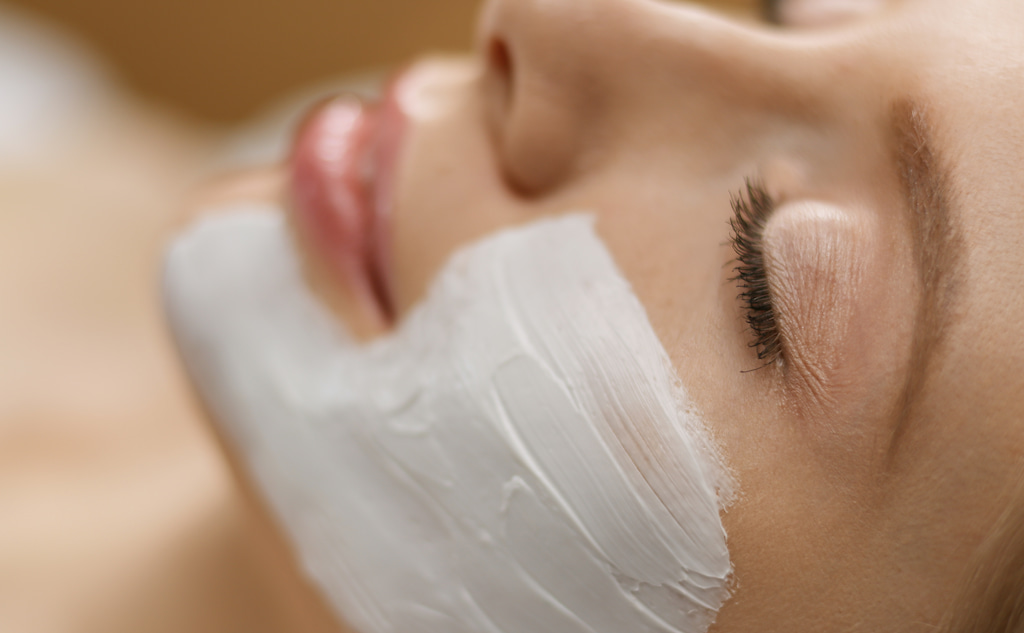
As the name suggests, chemical exfoliation utilizes chemicals to gently exfoliate and break down the skin cells. Generally speaking, those with highly sensitive skin, such as dry and sensitive skin, or those who are prone to breakouts typically react better to a chemical exfoliator as it is less irritating. You won’t need to do any scrubbing with a chemical exfoliant as the product does the work for you. Plus, many chemical exfoliants contain glycolic acids that help increase collagen production and even out rough texture. The most common types of chemical exfoliants include alpha-hydroxy acids (AHAs) and beta-hydroxy acids (BHAs), both of which we will explore below. Chemical exfoliators can be used in an exfoliating toner.
Alpha Hydroxy Acids (AHAs)
AHAs are one of the most common forms of chemical peels to remove dead cells. AHAs are part of an acid family that comes from natural sources such as milk, sugar, or fruit. Glycolic acid and lactic acid are two of the main AHAs used in skin care products today that provide gentle exfoliation.
Beta Hydroxy Acids (BHAs)
BHAs are another option for those who want a light chemical peel. The most common type of BHA is salicylic acid and it is an ideal ingredient for those who are prone to acne and breakouts. BHAs are synthetic derivatives that come from the same source as aspirin.
Enzymes
For those who have extremely sensitive skin, it’s advisable to look for a mild chemical exfoliator such as lotions that have an enzyme base. The enzymes found in skincare products come from natural sources such as fruits. They work similarly to acid-based exfoliators, however, they do so at a slower pace. This results in a safe, gentle exfoliating process. What happens when you exfoliate your face too roughly for your skin type is that you may cause acne breakouts and other issues, so it is best to prefer gentler methods to start.
What Is Physical Exfoliation?
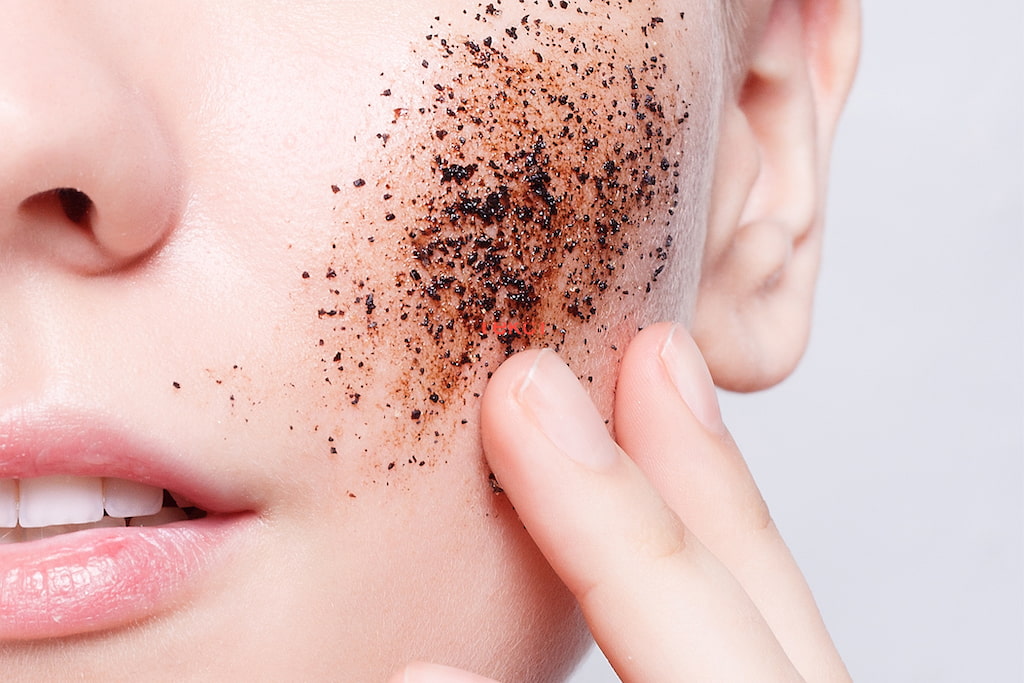
Another form of skin exfoliation is referred to as physical exfoliation. This process uses a hard substance that manually removes dead skin cells from your skin. A body washes or face scrub that has granules works to remove dead skin cells by mechanical exfoliation. Another example of a physical exfoliant is a sponge, towel, or brush.
While physical exfoliants have many positives, they are not suited for everyone. Some people accidentally use a face scrub too hard when exfoliating physically. This intense manual exfoliation combined with the beads in the product can lead to skin irritation and break down the skin’s barrier. Make sure to scrub gently and carefully when using a physical exfoliant.
Larger Granules
Those with an oily complexion often have large sebaceous glands. This makes their skin layer thicker and thicker skin is more tolerant of abrasive particles often found in physical exfoliants. Common ingredients include pumice or magnesium oxide crystals. Use them in circular motions to improve your skin texture.
Smaller Granules
For those who have dry or sensitive skin, consider opting for an exfoliating scrub that has smaller granules such as jojoba beads or ruby crystals. Jojoba beads come from the seeds of the jojoba plant. They are uniform in shape and size making them less prone to cut or irritate the skin.
Seeds and Crushed Nutshells
Even though some ingredients are natural, they may not be ideal to use on your skin. Natural products including crushed nutshells, ground fruit pits, seashells, and seeds should be avoided as they do not properly exfoliate the skin. They often have irregular shapes and edges that may cause damage.
WHAT ARE COMBINATION EXFOLIANTS?
Some exfoliators include a combination of mechanical exfoliation and chemical components, such as salicylic acids or mandelic acid. This exfoliation method combines the best of both worlds. It works great for combination skin.
How to Exfoliate Your Face
The best way to exfoliate your face depends on whether you are using a chemical or physical exfoliant.
Chemical Face Exfoliation
If you are wondering what to use to exfoliate your face, chemical face skin exfoliation is easy if you follow the below steps:
- Wash your face with a gentle cleanser.
- Some chemical exfoliants come as a pre-moistened pad or cloth while others come as a serum or gel. Regardless, make sure to apply the chemical exfoliant to your face, neck, decollete, and the tops of your hands.
- Wait a few minutes to let the product soak into your skin before following the treatment with a serum or cream.
Always check the product label to make sure you are using the chemical exfoliant correctly!
Physical Face Exfoliation
Physical face exfoliation is easy, too! Follow these steps for the best way to exfoliate your face for brighter skin:
- Start by using your regular cleanser to wash your face.
- Take a small amount of your facial scrub and gently apply it to your face in circular motions. Make sure to avoid the eyes.
- Use warm water and rinse the skin off and gently pat it dry with a clean towel.
- Use a hydrating mask, serum, or cream afterward.
Considering Your Skin Type Before Exfoliating
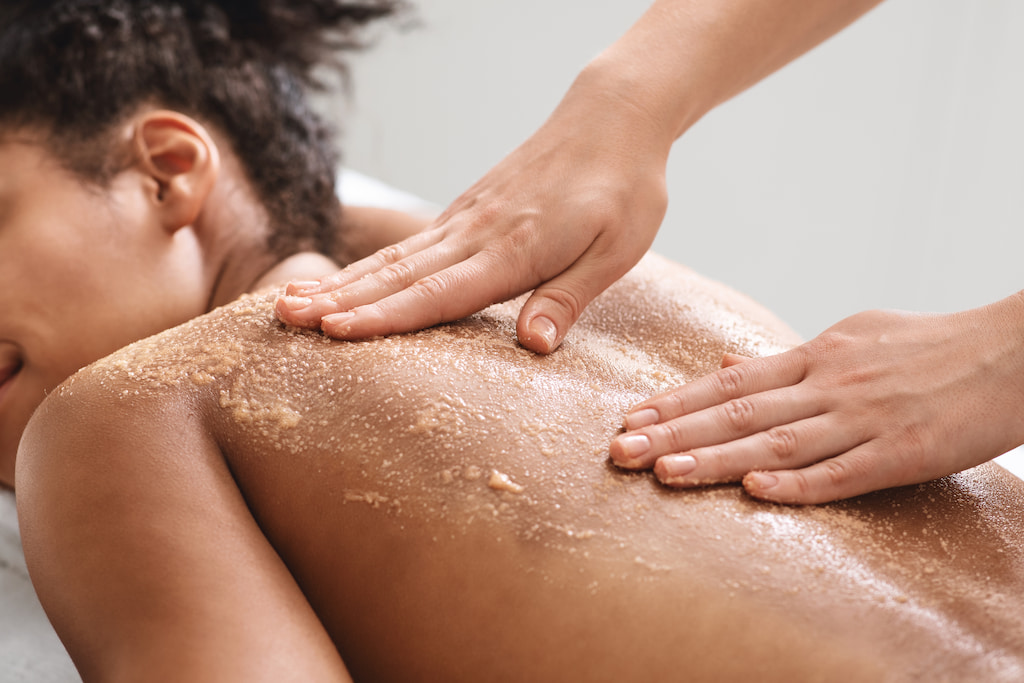
Different skin types do not do well with the same type of exfoliation method. Each one faces different issues, and ignoring their particularities could lead to acne breakouts and other skin issues. You may also ask for advice from a skincare professional based on your skin type.
CHEMICAL EXFOLIANTS FOR OILY SKIN
Oily skin types are typically shiny and greasy. They tend to struggle with clogged pores that trap dirt, makeup, and oil, which can cause acne and other issues. to heaven out the skin tone, the best oily skin exfoliants are oil-soluble, such as salicylic acid, as it smooths skin by penetrating surface cells.
CHEMICAL EXFOLIANTS FOR DRY SKIN
A dry skin type often has issues with irritated skin and often shows itchy, patchy, or rough spots. They should pick an exfoliant that can provide hydration and is on the milder side while stripping off dead cells for brighter skin. Dry skin types tend to do well with lactic or glycolic acid who also works to improve pigmentation and eliminate dark spots.
CHEMICAL EXFOLIANTS FOR SENSITIVE SKIN
Sensitive skin can be troublesome. Individuals with this skin type often feel stinging and burning sensations after using certain products, which may also cause adverse reactions like redness or patchy skin long after you have stopped using the product. It is difficult to pinpoint what your sensitive skin may react to without some trial and error or help from a board-certified dermatologist, but they often do well with azelaic acid.
CHEMICAL EXFOLIANTS FOR NORMAL/COMBINATION SKIN
Normal skin and combination skin may need to use different products on different zones of the face to target particular issues without making it worse or damaging other parts. For example, combination skin can be dry on the cheeks and need extra hydration while being oily on the forehead and having acne tendencies. You can alternate different exfoliators as well, like salicylic acid every other session.
Tips for Exfoliating the Face

So, how do you exfoliate your face to solve your skin issues without creating new problems? Here are our best exfoliating tips for face and body.
GET THE RIGHT PRODUCTS
Skincare is a very personal thing. Your best friend’s favorite products may cause you to feel itchy or break out. Therefore, you should always choose exfoliating products that are adapted to your skin type. Although finding the perfect combination may take some trial and error, it is best to start with milder products and stick to the same regimen for a while to see the results. If you have dry or sensitive skin, it may be best to do a trial on a small area to check how your skin reacts to a new product. Do not hesitate to ask for advice from a skincare professional if you have any doubts.
USE THE PRODUCTS THE RIGHT WAY
As tempting as it may be to go all out to solve your issues faster, going overboard can often cause an adverse reaction while a gentle exfoliation can go a long way. For example, for darker skin tones, a harsh exfoliation routine may cause dark spots on top of other issues. Check instructions and frequency on the product’s bottle and make sure to respect them. Mechanical exfoliation typically requires circular motions and may need to be spaced out for several days since it is harsher.
PHYSICALLY EXFOLIATE IN THE SHOWER
The best time to physically exfoliate is in the shower. The warm water and steam help soften the skin and release the body’s natural oil while opening the pores: a winning trio to make your routine as effective as possible. For the best results, do not exfoliate first thing after stepping into the shower. Instead, to rip the full benefits, wait at least 10 minutes and 5 minutes for your face so the hot water can prepare and soften your epidermis.
EXFOLIATE IN THE MORNING
Your skin will benefit from a regular exfoliating routine no matter the time of day, but experts consider that exfoliating in the morning may be the way to go. Your skin renews itself at night, potentially shading a layer of dead skin cells. Adding exfoliation to your morning routine allows you to remove dead cells while improving your face’s blood circulation for a fresh start. Besides, it will make your skin smooth and ready for makeup if you choose to apply it.
APPLY A MOISTURIZER
What you do after your exfoliating routine is just as important as exfoliation itself. Since even the softest exfoliation can be aggressive on the skin since the goal is the strip dead surface cells, you should always follow by moisturizing after thoroughly rinsing off the product and patting your face dry with a fresh towel. Your skin will be particularly vulnerable after exfoliating, so choose nourishing products like a calming moisturizer that will help it retain moisture and protect itself from the elements. The good news is that your products will be extra effective since they can penetrate better.
USE SOME PRESSURE
You do not want to be too rough on the delicate skin of your face to avoid abrasion and irritation, but there should still be some pressure to effectively strip the dead skin and eliminate dull skin. According to specialists, you should be able to feel the gritty texture of your product. Depending on your skin type, different parts of your face may have thicker skin capable of sustaining a harsher treatment. For example, your forehead and chin may need a more generic treatment than your cheek and the delicate skin beneath your eyes.
DON’T SKIP YOUR LIPS
The thin skin on your lips is particularly sensitive to harsh elements, such as dry air, the cold, the wind, and so on. Therefore, it is not surprising that your lips, too, may need a little extra TLC once in a while, especially in the winter. If your lips have a chapped and flaky aspect that cannot be fixed with your Chapstick alone, you can give them a gentle exfoliation with a bit of Vaseline and a soft toothbrush.
How to Exfoliate Your Body
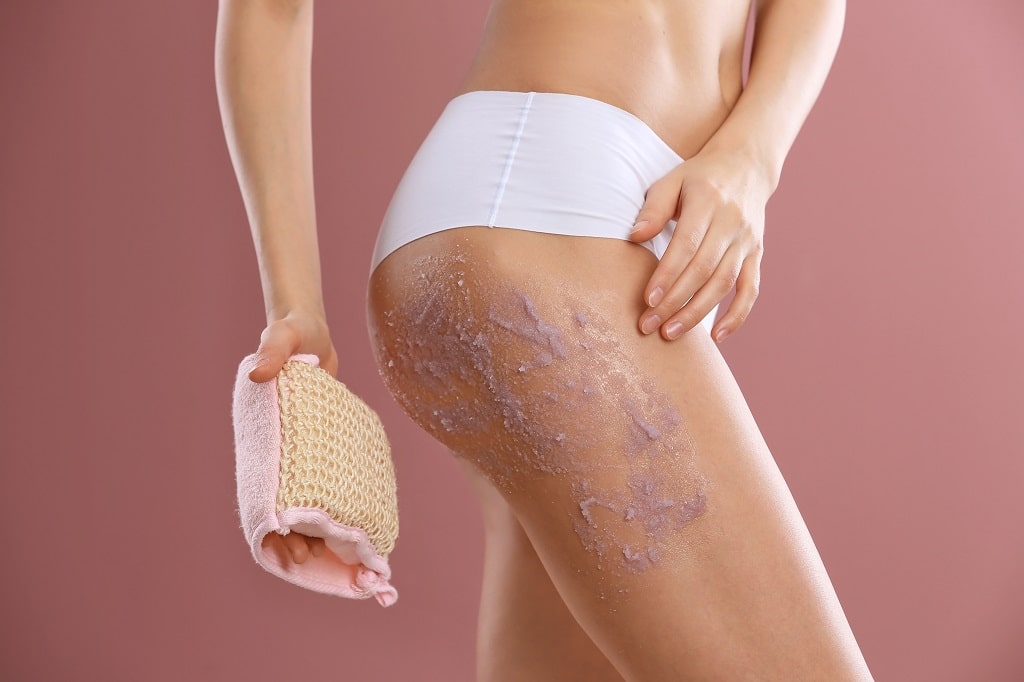
Don’t forget that the rest of your body needs exfoliation, too! The best way to exfoliate your body depends on where you want to exfoliate. So, how often should you exfoliate your body? Here are some general guidelines for different areas of the body:
- Bikini: the bikini area undoubtedly has sensitive skin so you’ll want to avoid aggravating it as much as possible. If you prefer a physical exfoliant, try taking a small amount of the product and rubbing it along your bikini line for a few minutes. Rinse it off with warm water. For chemical exfoliants, massage it into the skin and follow it up with a gentle and fragrance-free moisturizer.
- Legs: regularly exfoliating your legs can result in smoother skin, less cellulite, and better circulation overall. Take a dry brush and use gentle pressure to get your skin warmed up. Then, use your exfoliant. If you’re using a chemical exfoliant, massage it into your skin. If you’re using a scrub, use a circular motion to blend it into the skin and rinse it with warm water.
- Feet: the bottoms of the feet often require exfoliating as it is one of the toughest parts of the body. Scrubs, stones, and files can all help remove dead skin cells on your feet. Chemical exfoliation is a possibility as well. Simply wet your feet and rub on the chemical exfoliant. Over the next few days, your feet will shed a layer of skin revealing a fresh, healthy layer.
How Often Should You Exfoliate Your Skin?
When it comes to exfoliation, it’s recommended to do so once or twice a week. If you do so every day, it can cause too many micro-tears on your skin and remove its protective layer. If you are exfoliating too often, chances are high that your skin will let you know. You’ll likely see breakouts, redness, small bumps, burning, or stinging.
Precautions to Take When Exfoliating Skin
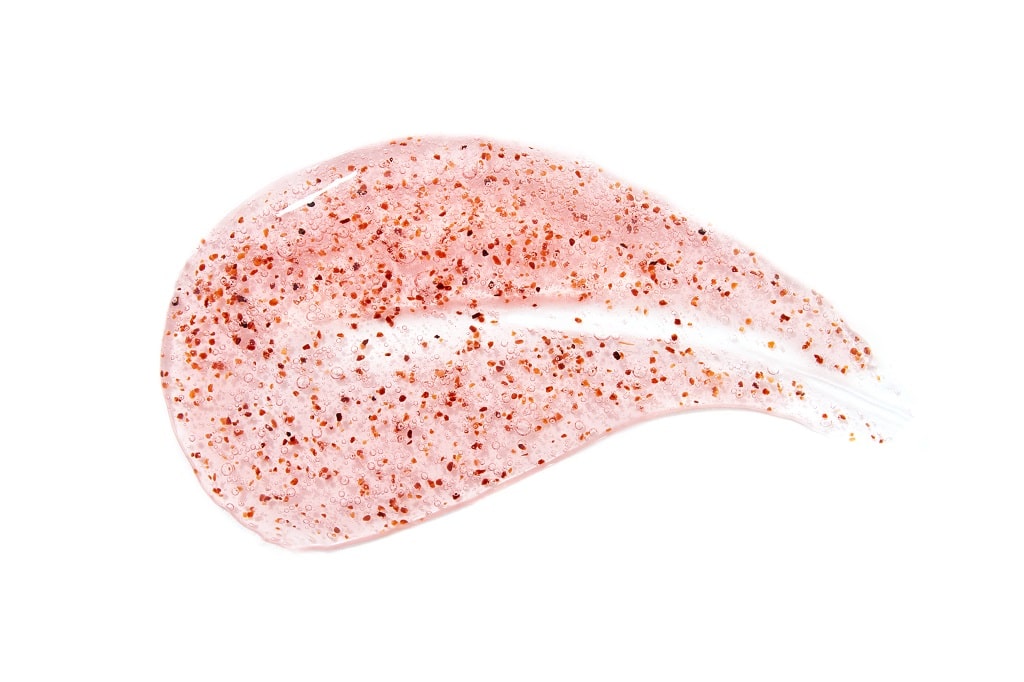
When it comes to exfoliating your skin, the benefits are expansive! However, over-exfoliated skin can be troublesome and result in additional skin ailments that you’ll want to treat. Here are some points of caution when it comes to exfoliating:
- Never scrub too hard, especially when you’re using a beaded scrub;
- Proceed with caution when using a loofah or other exfoliating tools;
- If your skin is dry and irritated, don’t use a chemical exfoliant too often;
- Whenever possible, use warm water instead of hot water. Hot water can be too harsh and irritate your skin;
- Always moisturize your skin following exfoliation.
When Should You Skip Exfoliation?
As beneficial as exfoliating may be for your skin, there are times when it may be better to hold off since exfoliation may have the exact opposite effect to what you are trying to achieve. For example, patients who suffer from acne breakouts may be tempted to go to town on their skin to clear it out. However, acne may be a sign that your skin is already inflamed, and harsh treatment will make your condition worse. For example, those with darker skin tones may suffer from hyperpigmentation.
You should also avoid exfoliating if your skin is otherwise irritated, such as sunburns, cuts, infections like cold sores, and so on. Instead, amp up your moisturizing regimen to help your skin heel. If you have any questions or if you notice that your skin tends to get worse after an exfoliating treatment, your best bet is to address your questions, such as what to use to exfoliate your skin, to a board-certified dermatologist.
More Guidance From Our Team
At the Metropolitan Skin Clinic, we know how important it is that you care for your skin properly. Exfoliating is an excellent part of a healthy skincare routine when executed properly. Our team is always here to answer your questions and guide you in the right direction! Feel free to reach out to us with any questions that you have or to schedule an appointment to see how we can help.

Please select a virtual or in-person consultation or call us (952) 288-2230





